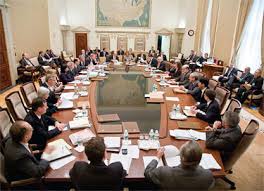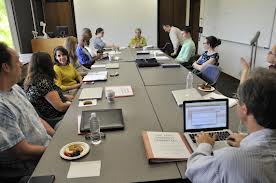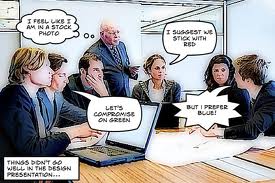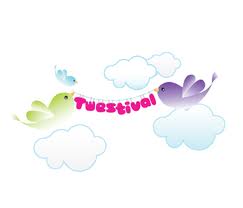User engagement isn’t always rainbows and unicorns
By Rose Reinert
Guest blogger
 Good morning! Last week we discussed chapter 14 of The Social Media Bible, which focused on webinars and online radio. This week, I am veering from my normal review of Lon Safko’s book and sharing a bit about my recent experience with Social Media – for better or worse.
Good morning! Last week we discussed chapter 14 of The Social Media Bible, which focused on webinars and online radio. This week, I am veering from my normal review of Lon Safko’s book and sharing a bit about my recent experience with Social Media – for better or worse.
As part of my current role as a Community Outreach Liaison, I oversee the planning, posting and monitoring of my agency’s Facebook Page. The experience has been fun and challenging.
I have a secret to share. As I have walked you all through the The Social Media Bible, I too have learned so much on how to improve my posting and engagement for my agency. So, I have gotten creative, shared links and posted photos and videos to better engage and attract attention from our followers.
Well, this past week I experienced first hand what it means to embrace this communication tool for better or worse.
Over the weeks, I have written all about how social media is a tool that:
- ensues two-way communication
- provides an opportunity for open communication
- builds trust
All sounds wonderful doesn’t it?
Well . . . sometimes . . . the truth hurts.
Recently, I received a clear and urgent email from my boss saying:
“There are negative comments on our Facebook page. Delete them and let me know when you do.”
Upon further investigation, I discovered some negative reviews, and these were not gentle notes of dissatisfaction. These posts were very detailed, passionate negative reviews from those who we had clearly failed. Despite my better judgment, I posted an apologetic response on each of the reviews, of which some were months old.
The following details are blurry, but let’s just say the untimely response threw gasoline on a fire.
Here is what I learned. If you enter the Social Media realm:
- You must accept, for better or worse, feedback.
- Having a clear plan and strategy for responding to negative and positive reviews as well as run-of-the-mill comments is critical.
- Approach your job with an understand that you cannot please everyone.
- Despite the potential for negative feedback, the opportunity for enhanced engagement and communication through social media outweighs the risks
So, like any good life lesson, I pick-up, learn, and move on.
Misery loves company. Please share with me your teachable moments with your social media marketing.


 If you cry “Forward!” you must make clear the direction in which to go. Don’t you see that if you fail to do that and simply call out the word to a monk and a revolutionary, they will go in precisely the opposite directions.
If you cry “Forward!” you must make clear the direction in which to go. Don’t you see that if you fail to do that and simply call out the word to a monk and a revolutionary, they will go in precisely the opposite directions.

 Work-Life balance is about dividing your time between work and life. Work stays there and your life is over here. The idea of balance looks like the scales of justice, and the two sides (representing work and life) are in perfect balance.
Work-Life balance is about dividing your time between work and life. Work stays there and your life is over here. The idea of balance looks like the scales of justice, and the two sides (representing work and life) are in perfect balance. I used to look at work-life balance through the same lens as my mother-in-law, but a friend of mine helped me change the way I look at these competing things in my life.
I used to look at work-life balance through the same lens as my mother-in-law, but a friend of mine helped me change the way I look at these competing things in my life. As I stewed about this morning’s conversation with my mother-in-law, I started thinking about all of my non-profit friends. I couldn’t think of anyone with perfectly balanced scales, but I could think of lots of non-profit friends who appear happy and fulfilled.
As I stewed about this morning’s conversation with my mother-in-law, I started thinking about all of my non-profit friends. I couldn’t think of anyone with perfectly balanced scales, but I could think of lots of non-profit friends who appear happy and fulfilled.
 At my previous agency, their national office made tremendous investments in webinars (aka distance learning). The following are just a few of the training titles I saw them offering:
At my previous agency, their national office made tremendous investments in webinars (aka distance learning). The following are just a few of the training titles I saw them offering: Many people have discovered Slacker radio, but online radio isn’t just about streaming music while you workout.
Many people have discovered Slacker radio, but online radio isn’t just about streaming music while you workout. In this post I will be sharing one of the most profound and impactful lessons of my life.
In this post I will be sharing one of the most profound and impactful lessons of my life. That’s quite a stretch you say? Okay, another possibility: because you are not so much concerned about the project now, you can devote some time and energy to researching twice a week home nursing visits for your mom. That concern just slid into your circle of influence…
That’s quite a stretch you say? Okay, another possibility: because you are not so much concerned about the project now, you can devote some time and energy to researching twice a week home nursing visits for your mom. That concern just slid into your circle of influence… Appointed or elected community leaders govern an organization. As outlined in my favorite Board book
Appointed or elected community leaders govern an organization. As outlined in my favorite Board book  The Finance Committee, chaired by Treasurer, works with the appropriate staff in examining the financial reports, understanding and monitoring the financial condition of the organization and preparing the annual budget. The Treasurer presents the monthly financial statements to the Board at each board meeting. This committee also selects an audit firm each year and reviews the audit plan, audit and 990, which should be signed by the Treasurer prior to submission.
The Finance Committee, chaired by Treasurer, works with the appropriate staff in examining the financial reports, understanding and monitoring the financial condition of the organization and preparing the annual budget. The Treasurer presents the monthly financial statements to the Board at each board meeting. This committee also selects an audit firm each year and reviews the audit plan, audit and 990, which should be signed by the Treasurer prior to submission. I recommend caution when creating committees to do the work of staff. It gets very confusing as to who is responsible for what and responsible to whom. If Board members are acting in staff roles, the Executive Director retains the authority for decision-making. If the Board members are operating within the scope of their roles, the Board has the authority for decision-making. Conversations had in advance can help you avoid role confusion and the overstepping of boundaries.
I recommend caution when creating committees to do the work of staff. It gets very confusing as to who is responsible for what and responsible to whom. If Board members are acting in staff roles, the Executive Director retains the authority for decision-making. If the Board members are operating within the scope of their roles, the Board has the authority for decision-making. Conversations had in advance can help you avoid role confusion and the overstepping of boundaries.
 As someone with two degrees in planning, I catch myself all the time with my non-profit clients explaining that the solution to their problems is that they need a plan. It might be a strategic plan, resource development plan, or board development plan . . . but oftentimes I am amazed at how many times failing non-profit agencies just haven’t invested in creating plans. I mean, come on folks! Who hasn’t heard the old expression, “If you fail to plan, then you plan to fail“?
As someone with two degrees in planning, I catch myself all the time with my non-profit clients explaining that the solution to their problems is that they need a plan. It might be a strategic plan, resource development plan, or board development plan . . . but oftentimes I am amazed at how many times failing non-profit agencies just haven’t invested in creating plans. I mean, come on folks! Who hasn’t heard the old expression, “If you fail to plan, then you plan to fail“?
 How does Twestival work?
How does Twestival work?
 A few short years ago, we couldn’t have even imagined such a scenario. In the past, proximity and commonality brought us together. We had family and close friends; help came from familiar places.
A few short years ago, we couldn’t have even imagined such a scenario. In the past, proximity and commonality brought us together. We had family and close friends; help came from familiar places. And I already see that I’m not adapting fast enough to keep pace with the innovations. The technology school bus isn’t waiting for me!
And I already see that I’m not adapting fast enough to keep pace with the innovations. The technology school bus isn’t waiting for me!
 In my humble opinion, non-profit professionals have two choices:
In my humble opinion, non-profit professionals have two choices: